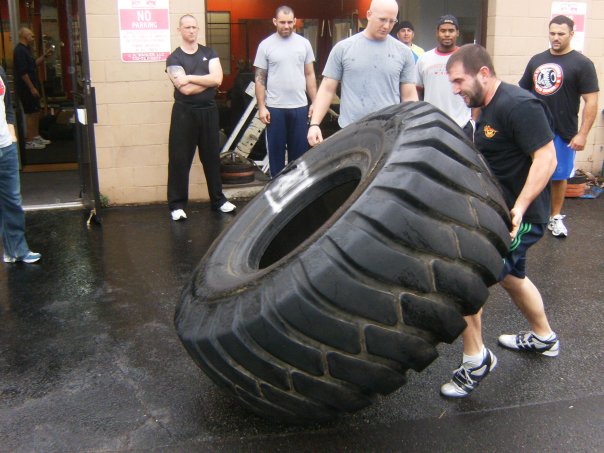Follow along with an up and coming Strength and Conditioning Coach located in Syracuse NY. Throughout the journey I will be posting about numerous different topics ranging from nutrition to strength training to random tangents I may go on occasionally.

Thursday, October 21, 2010
Truth about Speed and Agility
A very common question I am asked by athletes or parents of athletes is how to improve there foot speed or overall quickness. There are many drills and training tools developed for improving these two aspects of training. A common training tool you will see athletes use to develop foot speed is an agility ladder. One can expect a noticeable difference very quickly on these ladders. The reason I do not like to use these very often is because I do not think they translate to game speed very well. Most drills done, on an agility ladder, will help improve those specific drills while lacking improvement in real world foot speed or agility. The athlete will see results quickly on these ladders because they will be improving the specific movement they are practicing, with little room for progressions. My personal preference is to use these ladders during warm-ups to help wake the CNS, as well as getting the mind and body ready for the workout. The two common ways to improve athletes actually running speed is increased stride length or stride frequency. The key is to improve one while maintaining the other. If you improve frequency by cutting down the stride you will not notice a difference in your overall speed and vice versa. The common method used to improve frequency is over speed training. This can be done by sprinting 100% down a hill or by accelerating forward with the help of a bungee cord; all while maintaining your normal stride length. This is done to teach your body to move faster then 100% allowing you to improve your overall stride frequency. To improve stride length a common drill done by athletes is called striders. These are done running between 70-80% focusing on opening the stride longer then your normal length. By performing striders your teaching your body to open up more in the hips, eventually allowing for a longer running stride without sacrifice overall frequency. All these drills work and are used by many top level athletes to improve overall speed. The question I ask myself is how long can ones stride be lengthen or how much faster can an athlete actually turn there feet over to improve frequency? Using these drills alone will lead to athletic improvement quickly followed by a plateau. The key to increasing overall speed and agility is not only use of the drills mentioned above but also training to improve overall strength! The number one mistake athletes will make while trying to improve speed and agility is not training to improve strength. The common reason for this is because the athlete doesn’t want to get big and bulky, but only wants to improve speed. If you are making a sharp cut to change directions or accelerating forward during a sprint the determining factor is always going to be the force output generating from the ground by the foot. How do you improve your force output? Simply improve your overall strength! By training for strength alone you will not develop explosiveness and may actually slow down ala power lifters. I believe this is the major reason athletes shy away from training for strength to develop overall speed and agility. By using max effort strength days to develop a strong set of legs while working on running mechanics drills and dynamic/explosive effort days you can be assured in developing some serious game speed! That added strength will allow for more force generating each stride allowing for a longer more explosive stride. Also by using the max effort/dynamic effort lifting model your frequency of the stride will improve greatly as well.
Subscribe to:
Post Comments (Atom)
No comments:
Post a Comment